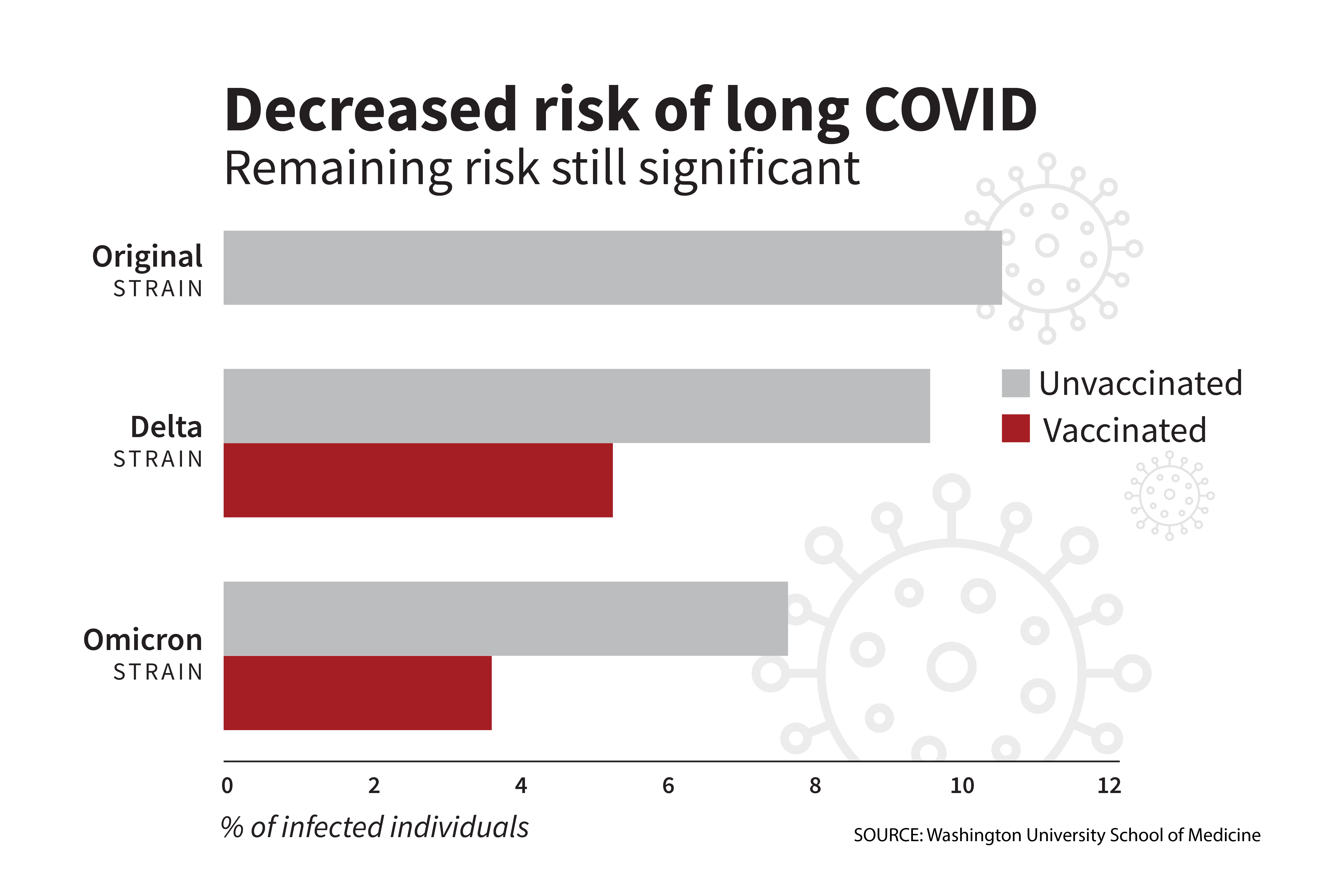Of 25 routine clinical lab tests, not one can aid in diagnosing post-acute sequelae of SARS-CoV-2
Tag: COVID-19
Lung Surfactant Changes Implicated in COVID-19 Acute Respiratory Failure in Mice
Article title: Activation of alveolar epithelial ER stress by β-coronavirus infection disrupt surfactant homeostasis in mice: implications for COVID-19 respiratory failure Authors: Aditi Murthy, Luis R. Rodriguez, Thalia Dimopoulos, Sarah Bui, Swati Iyer, Katrina Chavez, Yaniv Tomer, Valsamma Abraham, Charlotte…
Tips for teachers as they prepare for the 2024-2025 school year
Leigh McLean is an an associate research professor in the School of Education and Center for Research in Educational and Social Policy at the University of Delaware. In her program of research, she investigates how teachers’ emotions and emotion-related experiences including well-being impact their effectiveness.
Human resource management system strength in times of crisis
Abstract In times of crisis, employees turn to their managers for information and guidance. When managers share distinctive, consistent, and consensual information (also known as human resource management [HRM] system strength), it is easier for employees to make sense of…
Nasal COVID-19 vaccine halts transmission
A nasal COVID-19 vaccine blocks transmission of the virus, according to an animal study by researchers at Washington University School of Medicine in St. Louis. The findings suggest that vaccines delivered directly to the nose or mouth could play a critical role in containing the spread of respiratory infections.
We’d move if we could: Over half of Aussies eye smaller towns for better housing and family life
More than half of Australian residents living in a large city would be open to forgoing their metropolitan lifestyles and moving to a smaller area in search of more affordable housing and better conditions for raising children.

Verano FLiRT: Qué Esperar de COVID-19
Una oleada de COVID-19 durante el verano se está convirtiendo en algo tan fiable como el calor ardiente.
New ACP paper discusses the ethics around academic discourse, scientific integrity, uncertainty, and disinformation in medicine
The COVID-19 pandemic brought many issues in health care to light including the issues of scientific integrity; decision making in the face of scarce or conflicting data; and rapidly-changing guidance that raised and resulted in dis- and misinformation.
Does information disclosure alleviate overcrowding? An empirical study based on large-scale COVID-19 nucleic acid test
Abstract Nucleic acid testing is a critical means of combating COVID-19. However, the overcrowding caused by large-scale nucleic acid testing increases the risk of virus infection and challenges the existing health supply chain. Aiming at alleviating overcrowding, this paper studies…
Mini lungs make major COVID-19 discoveries possible
Scientists at Sanford Burnham Prebys, University of California San Diego and their international collaborators have reported that more types of lung cells can be infected by SARS-CoV-2 than previously thought, including those without known viral receptors.

Risk of long COVID declined over course of pandemic
The risk of long COVID has declined over the course of the pandemic, although it remains a persistent threat. Researchers from Washington University School of Medicine in St. Louis identified vaccination as a primary factor in reducing the risk of long COVID.
Hospital-onset SARS-CoV-2 infection associated with significant morbidity and mortality during Omicron era
A retrospective matched cohort study found that SARS-CoV-2 infections acquired while in the hospital continue to be associated with significant morbidity and mortality, even during the Omicron era.
Nearly One in 10 Pregnant People Who Get COVID Will Develop Long COVID
9.3% of people who get COVID while pregnant will go on to develop long COVID. The study, led by University of Utah Health researcher Torri Metz, found that common symptoms were fatigue, gastrointestinal issues, and feeling drained or exhausted by routine activities.
Tip Sheet: Summer science education, new chief nursing officer, DEI program updates — and a new endpoint for multiple myeloma
Below are summaries of recent Fred Hutch Cancer Center research findings, patient stories and other news.
Marginalized identities, healthcare discrimination, and parental stress about COVID-19
Abstract Objective This paper assesses stress disparities among marginalized parents in 2020–21 during the COVID-19 pandemic through the mechanism of healthcare discrimination. Background The pandemic upended the lives of American families and had particularly stark mental health consequences for women,…
Marital status and happiness during the COVID-19 pandemic
Abstract Objective This study examines the long-observed marital advantage in happiness during the COVID-19 pandemic. Background The COVID-19 pandemic may have altered the marital advantage in happiness due to changes in social integration processes. However, this has not been explored…
Extending theoretical explanations for gendered divisions of care during the COVID-19 pandemic
Abstract Objective This article extends pre-pandemic theories, empirically testing the salience of pandemic-based absolute and relative resources and time availability mechanisms for understanding gendered divisions of childcare across the COVID-19 pandemic. Background Multiple cross-sectional studies have examined gender differences in…
Fighting COVID-19 With a Cancer Drug
Researchers at University of California San Diego show that a molecule which shuttles damaging inflammatory cells into cancer tumors also shuttles inflammatory cells into lung tissue infected with COVID-19 — and that the molecule can be suppressed with a repurposed cancer drug. The work represents a new approach to preventing irreversible organ damage in infectious diseases.

UAH researcher publishes study tapping social media and AI to speed supply chain assistance during disasters
A doctoral candidate at The University of Alabama in Huntsville (UAH) is lead author of a new study in the International Journal of Production Research investigating the ways social media platforms can be leveraged with artificial intelligence (AI) to provide vital communication connecting victims of disaster to outside aid and support.
Nordic researchers develop predictive model for cross-border COVID spread
In a major multidisciplinary collaboration effort across Finland, Sweden, Norway and Denmark, researchers have published a pioneering study on the spread of infections across Nordic borders from spring until the end of 2020. The report sheds light on the efficacy of cross-border travel restrictions, helping us better understand which measures actually make a difference.
Mount Sinai Expands Center for Post-COVID Care to Serve Patients in East Harlem and South Bronx
$5 million grant from the Agency for Healthcare Research and Quality will enhance long COVID care for underserved minority groups, community outreach, and research
Understanding protective behavior and vaccination adoption among US individuals during the COVID-19 pandemic: A four-wave longitudinal study
Abstract During the long COVID-19 pandemic, individuals’ attitudes toward protective measures and vaccination vary, yet, research remains unclear about the dynamics underlying them. We collected matched data from US respondents at four time points from the beginning of the pandemic…
UC study exposes socio-economic disparities during the initial wave of COVID-19 in NYC
New York City, with a population of 8.5 million people, was one of the locations most heavily affected by the first wave of the COVID-19 pandemic in North America and Europe. A large body of research has shown that those individuals who are of lower average socioeconomic status were especially affected by the pandemic and experienced a much higher rate of viral infection.
Cannabis use tied to increased risk of severe COVID-19
A study by researchers at Washington University School of Medicine in St. Louis shows that people with COVID-19 who used cannabis were more likely to be hospitalized and require intensive care than those who did not use the drug.
How Your Sleep Patterns Change Can Tell You About Your Health
Your sleep tracker might give you information about more than just your sleep–specifically, it might give you information about chronic conditions such as diabetes and sleep apnea, and illnesses such as COVID-19. This is one of the findings of a study that analyzed data from 5 million nights of sleep across roughly 33,000 people.
The effect of covid policy restrictions on donations during the sustainable and entrepreneurial context
Abstract Using real platform data, this paper assesses donors’ reactions to a rare event; specifically, we demonstrate how donors were able to compensate for (or stabilize) healthcare deficits and policy restrictions used to mitigate the spread of COVID-19. Based on…
Understanding consumer behavior during and after a Pandemic: Implications for customer lifetime value prediction models
Abstract Our study uses a cohort analysis to investigate Customer Lifetime Value (CLV) for customer cohorts acquired before and during the COVID-19 pandemic. The research estimates CLV in a continuous-time setting of customer transactions within the online grocery sector. Stochastic…
Searle Scholar Award Powers Investigation of Viral Evolution
How can an animal virus turn into a human disease? Between the ongoing COVID-19 pandemic and the looming concern of avian flu, the question is an urgent one. Tyler Starr, PhD, has received a prestigious Searle Scholar Award to look for answers.
Short-term side effects after COVID-19 vaccination associated with greater antibody response
A study of newly vaccinated adults found that short-term side effects after vaccination were associated with greater long-lasting neutralizing antibody (nAB) responses. The study is published in Annals of Internal Medicine.
FDA Recommends Updated COVID-19 Vaccine for Fall
The Food and Drug Administration advisory panel is recommending a Covid-19 vaccine for the fall should be updated. The updated version would target the JN.1 variant which is currently the most dominant strain. According to the CDC, it counts for…
U.S. Drug-related Infant Deaths More than Doubled from 2018 to 2022
Drug-involved infant deaths more than doubled (120% increase) from 2018 to 2022, with the greatest proportion of deaths in 2021 (25.8%). The most prevalent underlying causes of death included assault (homicide) by drugs, medicaments and biological substances (35.6%).
Societal and biological factors both contribute to mental health issues in the wake of COVID-19
Healthcare teams and researchers have documented an increase in mental health issues since the beginning of the COVID-19 pandemic. UChicago experts explore these trends and discuss how biological and societal factors alike can contribute.
AI model confirms vaccination is key to cutting COVID in prisons
A team of scientists has developed an artificial intelligence (AI)-based transmission model that can predict prison infection rates with high accuracy. Incorporating real-world data from every facility in the NSW prison system, the new findings add weight to current theoretical models.
Blood RNA Biomarkers Identify Bacterial and Biofilm Coinfections in COVID-19 Intensive Care Patients
Abstract Purpose: Secondary opportunistic coinfections are a significant contributor to morbidity and mortality in intensive care unit (ICU) patients, but can be difficult to identify. Presently, new blood RNA biomarkers were tested in ICU patients to diagnose viral, bacterial, and biofilm…
Definitions and models of care for long COVID remain unclear
A scoping review of 38 published articles related to the definition and care of long COVID found differences between reported definitions and models of care for the condition.
COVID-19 Impacted Domestic Violence Differently Depending on Class, but Not in the Way You May Think: New Study
New sociological research that looks into how crisis conditions during the pandemic—such as poor heath and insecure housing—affected domestic abuse and victims’ interpretation of violence.
Not sure about vaccines? How public health messaging is framed makes a difference, new research reveals
What’s the best way to communicate with a vaccine-hesitant person about a vaccine’s potential benefits? New research from Binghamton University, State University of New York found that a one-size-fits-all approach to communicating messages isn’t effective.
Cleveland Clinic ReCOVer Clinic now enrolling Long COVID patients in the NIH RECOVER-VITAL clinical study.
The Cleveland Clinic ReCOVer Clinic will now be enrolling Long COVID patients in the NIH RECOVER-VITAL clinical study. The study will determine whether PAXLOVID, an antiviral drug used to treat mild-to-moderate COVID infections, can be used to treat Long COVID. It…
New Covid Variants Have Emerged Called FLiRT
Two new COVID-19 variants nicknamed FLiRT are circulating. The new strains are sub variants of the omicron variant. The FLiRT strains have the same pattern as previous mutations and early evidence suggests it may be more contagious. It may also…
Rutgers Health Researchers Profile Clinical, Gene and Protein Changes in ‘Brain Fog’ From Long COVID
Scientists examined cognitive impairment and recovery time in patients following COVID-19 infection.
Rutgers Health Researchers Profile Clinical, Gene and Protein Changes in ‘Brain Fog’ From Long COVID
Rutgers Health researchers found that long COVID is associated with active inflammatory changes in the nervous system, but the condition is distinct from Alzheimer’s disease and other neurodegenerative disorders.

Brookhaven Lab Biophysicist F. William Studier Awarded Merkin Prize in Biomedical Technology
F. William Studier, a senior biophysicist emeritus at the U.S. Department of Energy’s ‘Brookhaven National Laboratory, has won the 2024 Richard N. Merkin Prize in Biomedical Technology for his development in the 1980s of an efficient, scalable method of producing RNA and proteins in the laboratory.
GUIDE team develops computational approach to redesign antibodies for broader effectiveness against viral pandemics
In a groundbreaking development for addressing future viral pandemics, a multi-institutional team involving Lawrence Livermore National Laboratory researchers has successfully combined an artificial intelligence-backed platform with supercomputing to redesign and restore the effectiveness of antibodies whose ability to fight viruses has been compromised by viral evolution. The work was published in the journal Nature.
ADLM releases guidance to help healthcare professionals navigate respiratory virus testing in a post-COVID world
The Association for Diagnostics & Laboratory Medicine (ADLM, formerly AACC) has issued a new guidance document that provides expert recommendations on fundamental areas of clinical testing for respiratory viral infections. As respiratory virus testing continues to evolve rapidly in the wake of the COVID-19 pandemic, this guidance aims to ensure that patients benefit fully from emerging technologies in this field.
Columbia Nursing Study Gauges Effectiveness of COVID-19 Burden Mitigation Policies
In a study published in the Journal of the American Medical Association, researchers evaluated the effectiveness of state and territory-level policies enacted to reduce the severity of COVID-19’s impact on older people served by home health care agencies and nursing homes.
COVID-19-induced financial hardships reveal mental health struggles
Economic researchers at the University of South Australia have examined the mental health effects on people who experienced financial setbacks during the height of the COVID-19 pandemic.

Bird Flu Basics: Safety, Symptoms and Risks
The highly infectious bird flu, also known as avian influenza H5N1, primarily spreads among birds. However, there have been rare cases of infection to humans. According to the Centers for Disease Control and Prevention, two human cases of H5N1 have…
Mesenchymal stem cells and their derived exosomes for the treatment of COVID-19
Coronavirus disease 2019 (COVID-19) is an acute respiratory infection caused by severe acute respiratory syndrome coronavirus 2 (SARS-CoV-2). SARS-CoV-2 infection typically presents with fever and respiratory symptoms, which can progress to
Rising hospital closures disproportionately affect disadvantaged communities
An analysis by UChicago researchers revealed that hospitals are more likely to close in predominantly Black and socioeconomically disadvantaged communities, potentially exacerbating existing health inequalities.
Scientists discover higher levels of CO2 increase survival of viruses in the air and transmission risk
A new study has revealed for the first time the vital role carbon dioxide (CO2) plays in determining the lifespan of airborne viruses – namely SARS-CoV-2, the virus that causes COVID-19. It clearly showed keeping CO2 levels in check helps to reduce virus survival, and therefore the risk of infection.